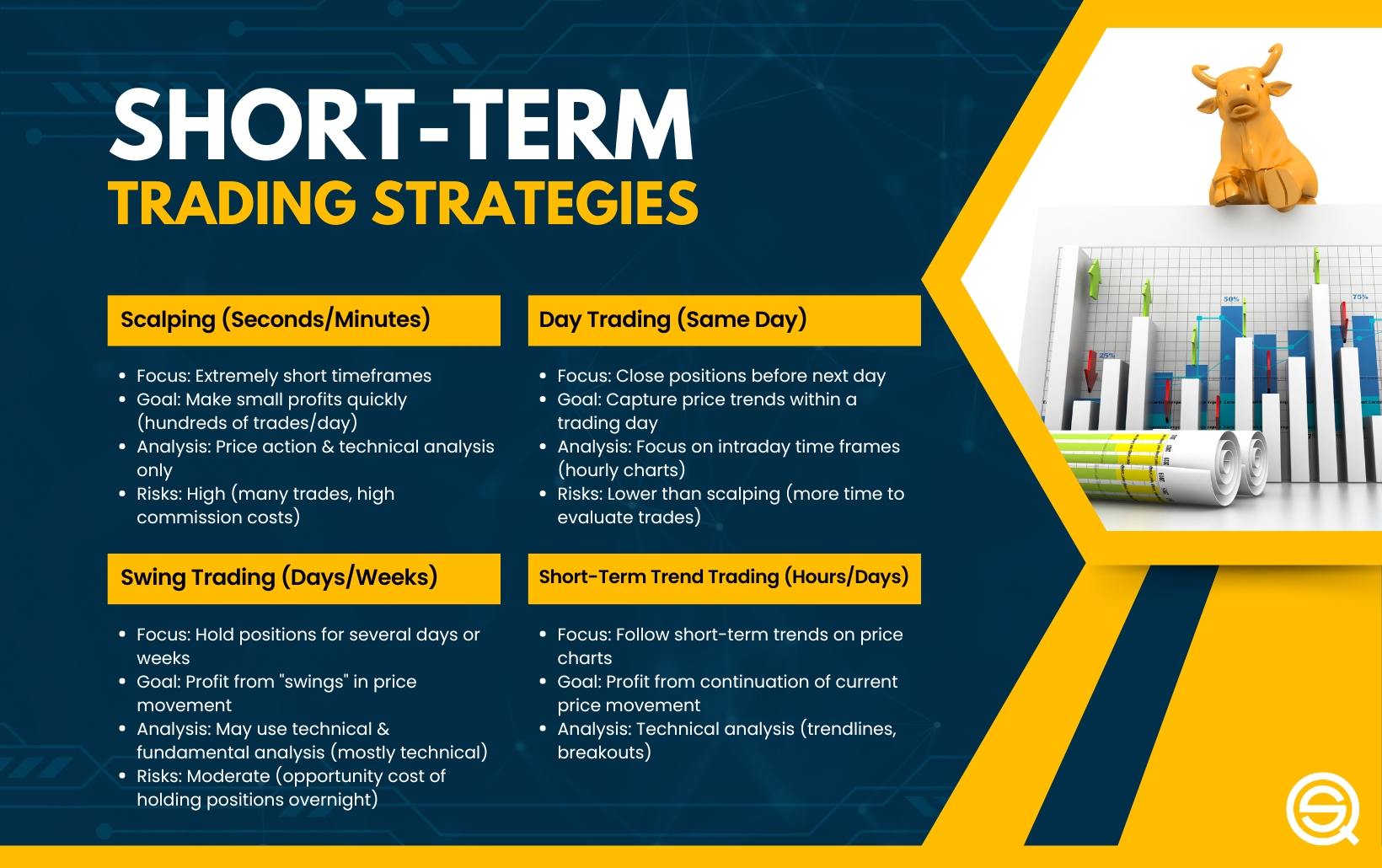Did you know that the first recorded stock trade took place in Amsterdam in 1602? Fast forward to today, and day trading has transformed into a dynamic blend of strategy, technology, and community. This article explores the evolution of day trading, highlighting its historical milestones, the impact of technology, and the critical role of online brokers. We delve into how the 2008 financial crisis reshaped trading landscapes, current trends in strategies, and the influence of social media on traders. Additionally, we discuss regulatory changes, the rise of algorithmic trading, and essential skills for today's day traders. Finally, we look ahead to the future of day trading over the next decade, helping you navigate the challenges and opportunities that lie ahead. Join us at DayTradingBusiness for a deeper understanding of this ever-evolving field.
What is day trading and how has it evolved over time?
Day trading is the practice of buying and selling financial instruments within the same trading day to capitalize on short-term price movements. It has evolved from traditional methods, using physical exchanges and telephones, to today’s digital platforms with advanced algorithms and real-time data. Initially dominated by professional traders, day trading is now accessible to individuals through online brokerages and mobile apps. The rise of social media and educational resources has further democratized the practice, allowing more people to participate. Future trends may include increased automation, integration of AI, and regulatory changes impacting trading strategies.
What were the key historical milestones in day trading?
Key historical milestones in day trading include:
1. 1920s – 1930s: The stock market boom and subsequent crash led to increased interest in short-term trading strategies.
2. 1975: The SEC deregulated commissions, making trading more accessible and competitive.
3. 1980s: The rise of electronic trading systems began, allowing faster transactions and greater market access.
4. 1990s: The internet explosion brought online trading platforms, significantly increasing retail participation.
5. 2000s: High-frequency trading emerged, utilizing algorithms and technology for rapid trades, changing the landscape of day trading.
6. 2008: The financial crisis led to increased scrutiny and regulation of trading practices, impacting day trading strategies.
7. 2020s: The rise of mobile trading apps and social media platforms has transformed day trading into a mainstream activity among retail investors.
These milestones reflect the evolution of day trading from a niche practice to a widely accessible investment strategy.
How has technology changed day trading practices?
Technology has transformed day trading by enabling faster execution of trades, real-time data analysis, and algorithmic trading strategies. Traders now use advanced software and platforms for instant access to market information, charts, and analytics. Mobile trading apps allow traders to operate on-the-go, increasing flexibility and responsiveness. Social media and online communities have also facilitated information sharing and strategy discussions, enhancing collaboration among traders. Overall, technology has made day trading more accessible, efficient, and data-driven.
What role do online brokers play in modern day trading?
Online brokers facilitate day trading by providing platforms for buying and selling securities quickly and efficiently. They offer real-time market data, advanced trading tools, and educational resources, enabling traders to execute strategies effectively. Low fees and easy access to global markets have democratized trading, allowing more individuals to participate. Additionally, online brokers often feature mobile trading apps, making it convenient for traders to react to market changes on the go. Overall, they play a crucial role in shaping the trading landscape by enhancing accessibility and efficiency.
How did the 2008 financial crisis impact day trading?
The 2008 financial crisis significantly impacted day trading by increasing market volatility and changing trader behavior. Many day traders faced substantial losses due to sharp price swings and uncertainty. The crisis also led to stricter regulations, limiting leverage and increasing margin requirements. As a result, some traders exited the market, while others adapted by focusing on technical analysis and risk management strategies. Overall, the crisis reshaped day trading, making it more challenging but also encouraging a more disciplined approach among traders.
What are the current trends in day trading strategies?

Current trends in day trading strategies include algorithmic trading, which uses automated systems to execute trades based on predefined criteria. Scalping remains popular, focusing on small price changes for quick profits. Traders are increasingly utilizing technical analysis tools, such as moving averages and RSI, to identify entry and exit points. Social trading and the influence of online communities are also rising, allowing traders to follow and replicate successful strategies. Additionally, there's a greater emphasis on risk management techniques to protect capital in volatile markets.
How do social media and online communities influence day trading?
Social media and online communities significantly influence day trading by providing real-time information, trends, and sentiment analysis. Traders share strategies, tips, and market insights instantly, which can lead to rapid price movements. Platforms like Twitter, Reddit, and Discord create a space for discussion, enabling traders to react quickly to news or rumors. This connectivity fosters a herd mentality, where traders may follow popular opinions, amplifying volatility. Overall, social media and online communities shape trading behaviors, strategies, and market dynamics in the modern landscape of day trading.
What are the regulatory changes affecting day trading today?
Recent regulatory changes affecting day trading include increased margin requirements, stricter rules on pattern day trading, and enhanced transparency measures. The SEC has implemented rules to address the risks associated with high-frequency trading and has focused on protecting retail investors. Additionally, brokerages are required to provide clearer disclosures about trading costs and risks. These changes aim to promote fair practices and reduce volatility in the market.
How has the rise of algorithmic trading transformed the market?
Algorithmic trading has transformed the market by increasing trade speed and efficiency. It allows for high-frequency trades, enabling traders to capitalize on minute price changes almost instantaneously. This has led to greater market liquidity, tighter spreads, and reduced transaction costs. However, it has also introduced volatility, as algorithms can trigger rapid market movements. The reliance on algorithms has shifted the skill set required for day trading, emphasizing programming and data analysis over traditional trading techniques. Overall, algorithmic trading has reshaped strategies, making the market more competitive and data-driven.
How Has Day Trading Evolved Over Time and What Trends Shape Its Future?

Day trading is the practice of buying and selling financial instruments within the same trading day to capitalize on short-term price movements. It involves executing multiple trades throughout the day, often using technical analysis and real-time market data to make quick decisions.
Learn more about: What is Day Trading?
Learn about How to Time Your Day Trading Entries and Exits
What are the challenges faced by day traders in the present market?
Day traders today face several key challenges:
1. Market Volatility: Rapid price fluctuations can lead to significant gains or losses, making it hard to predict trends.
2. Increased Competition: More traders and sophisticated algorithms increase competition for profitable trades.
3. Regulatory Changes: New regulations can impact trading strategies and access to certain markets.
4. High Transaction Costs: Commissions and fees can eat into profits, especially with frequent trading.
5. Emotional Stress: The pressure to make quick decisions can lead to emotional trading, which often results in losses.
6. Technological Reliance: Dependence on technology means system failures or outages can disrupt trading activities.
7. Information Overload: The vast amount of data available can be overwhelming, making it difficult to identify actionable insights.
These challenges require day traders to adapt their strategies continually.
What skills are essential for successful day trading today?
Essential skills for successful day trading today include:
1. Technical Analysis: Ability to read charts and indicators to identify patterns.
2. Risk Management: Knowing how to set stop-loss orders and manage capital allocation.
3. Emotional Discipline: Keeping emotions in check to avoid impulsive decisions.
4. Market Knowledge: Understanding current market trends and news impact.
5. Quick Decision-Making: Ability to make rapid, informed choices under pressure.
6. Adaptability: Flexibility to adjust strategies based on market conditions.
7. Trading Platforms Proficiency: Familiarity with trading software and tools for execution.
Mastering these skills is crucial for navigating the evolving landscape of day trading.
How is day trading expected to evolve in the next decade?
Day trading is expected to evolve significantly over the next decade due to advancements in technology, increasing accessibility, and regulatory changes. Algorithmic trading and AI will dominate, offering faster execution and predictive analytics. Retail traders will have more access to sophisticated tools and platforms, enabling them to compete effectively. Social trading will grow, with platforms that allow users to share strategies and insights. Additionally, the rise of cryptocurrencies and decentralized finance (DeFi) will attract new participants. Regulatory frameworks will also adapt, potentially increasing transparency and reducing risks. Overall, day trading will likely become more data-driven and community-oriented.
What impact do economic indicators have on day trading strategies?
Economic indicators significantly influence day trading strategies by affecting market sentiment and price volatility. Traders analyze reports like GDP, unemployment rates, and consumer confidence to anticipate price movements. Positive indicators often lead to bullish trends, while negative ones can trigger sell-offs. Day traders adjust their strategies accordingly, using indicators to time entries and exits. For instance, a strong jobs report might prompt a trader to buy stocks in related sectors, while weak data could lead to short positions. Understanding these indicators helps traders make informed, timely decisions.
Learn about Impact of Economic Events on Futures Day Trading
How do psychological factors affect day trading decisions?
Psychological factors significantly impact day trading decisions. Emotions like fear and greed can lead to impulsive trades, causing traders to buy high and sell low. Overconfidence often results in underestimating risks, while loss aversion may prevent traders from cutting losses. Cognitive biases, such as confirmation bias, can skew decision-making by favoring information that supports existing beliefs. Additionally, stress from market volatility can impair judgment, leading to poor choices. Understanding these psychological influences is crucial for developing effective day trading strategies.
What tools and platforms are popular among day traders now?
Popular tools and platforms among day traders now include TD Ameritrade's Thinkorswim, E*TRADE, and Interactive Brokers for trading. For charting and technical analysis, many use TradingView and MetaTrader 4/5. Additionally, stock screening tools like Finviz and news aggregators like Benzinga are favored. Mobile apps like Webull and Robinhood are also gaining traction for their user-friendly interfaces.
How can beginners start day trading effectively in today's market?
Beginners can start day trading effectively by following these steps:
1. Educate Yourself: Learn about market basics, trading strategies, and technical analysis through books, online courses, and forums.
2. Choose a Trading Platform: Select a user-friendly broker with low fees and good tools for day trading.
3. Develop a Trading Plan: Create a clear strategy that includes your risk tolerance, profit goals, and specific entry and exit points.
4. Practice with a Demo Account: Use a simulated account to test your strategy without risking real money.
5. Start Small: Begin with a small investment to minimize risk while gaining experience.
6. Stay Informed: Keep up with market news, economic indicators, and trends that affect stock prices.
7. Manage Your Emotions: Stick to your plan and avoid impulsive decisions based on fear or greed.
By focusing on these steps, beginners can navigate today’s fast-paced day trading environment more effectively.
Learn about How to Start Day Trading for Beginners
Conclusion about The Evolution of Day Trading: Past, Present, Future
In conclusion, day trading has undergone significant transformation from its early days to the present, largely driven by technological advancements and changing market dynamics. As traders navigate current trends, online brokerages, and evolving regulations, they must also adapt to the influence of social media and algorithmic trading. Looking ahead, understanding economic indicators and honing essential skills will be crucial for success. For those seeking comprehensive guidance and support, DayTradingBusiness remains a valuable resource to help traders thrive in this ever-evolving landscape.